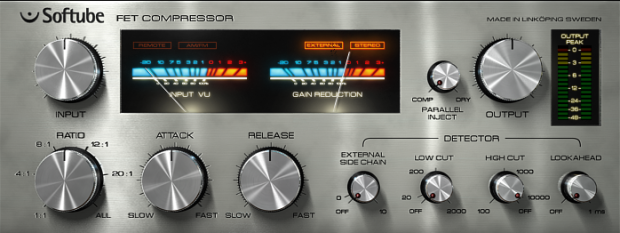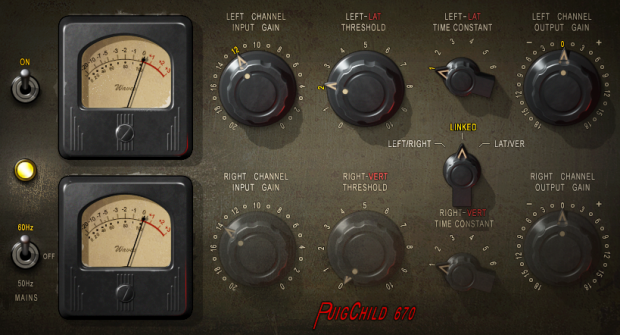One of the most common topics that I get asked about is compression. People often ask, “Should I get X or Y plugin?” without realizing that they are comparing two different audio compressor circuit types, which behave very differently. In the audio engineering world, audio compression seems to take a close second on the list of difficult concepts to comprehend.
Most people have an understanding of the basic principles of compression. However, when it comes to the more subtle differences between types of audio compressors, many might feel a little lost. This article aims to rectify that. We’re going to delve into the depths of audio compressor circuitry and discover what makes a compressor circuit right for the job.
Table of Contents
- What Are Audio Compressor Circuit Types?
- VCA – Voltage Controlled Amplitude
- FET – Field-Effect Transistor
- Optical
- VARI-MU
- To Summarize
- TL;DR
What Are Audio Compressor Circuit Types?
Understanding audio compressor circuit types is essential for any audio engineer or producer. Each circuit type not only influences the sound but also affects the overall dynamics and texture of your mix. When selecting a compressor, consider the specific characteristics of the source material and the desired outcome. Experimentation is key; by trying different compressor types on various tracks, you can discover unique sonic possibilities that enhance your music production. Whether you aim for punchy drums, warm vocals, or smooth bass lines, knowing how to leverage these circuit types will elevate your mixing skills and help you achieve a polished final product.
Most audio compressors operate using either VCA (Voltage Controlled Amplitude), FET (Field-effect Transistor), OPTO (Optical), or VARI-MU (Variable-MU). By learning to differentiate these audio compressor circuit types, you will gain far more control over your mixes. Let me break each of them down for you so you can see what key aspects make each of them so unique.
VCA – Voltage Controlled Amplitude
Perhaps the most famous VCA compressor of all time is the DBX160. Practically every VCA-style plugin that you’ll come across today will be modeled, in some way, on this device. Voltage-controlled amplitude compression acts on PEAK signal input and offers a fast attack and release. For this reason, it’s fantastic at taming transient content.

To use it in a practical scenario, let’s say you’ve got a snare top recording where the drummer gets a little enthusiastic during transitions. Here and there, you are likely to have some hits that stick out. Due to its fast-acting nature, VCA compression will help to address those hits almost instantly. This can bring them in line with an acceptable dynamic range for your mix. Of course, there can be a tendency to go overboard with this. VCA audio compressors are fast and generally quite sensitive. Make sure to keep their usage minimal or you risk squashing the life out of your recordings.
On a contradictory note, VCAs are brilliant for parallel drum compression. Being so fast and heavy-handed, they can help produce fantastic snap and punch. Dial them in strong (I’m talking 10dB of reduction) and listen to your drums smash through the mix.
As you are probably now aware, there are some pretty obvious times not to use this. If you are looking to add color, warmth, or a sense of smoothness to anything, this isn’t the compressor circuit type for you. Due to its fast nature, VCA compression has no regard for long frames of average volume.
FET – Field-Effect Transistor
Moving on to our next circuit type, the FET has played a major part in the music business. The likelihood of finding a studio that doesn’t have an 1176 (or other FET-style audio compressors) today is incredibly low. If you’re looking for some punch and aggression, you’ve come to the right place.

While it isn’t the most transparent sound, this is hardly a problem. The FET is often treated more as an effect than a process. It’s something you want to be able to hear doing its job. If you can’t, you’re not using it right! Typical usage will be on anything that you want a bit more character from. It’s known for its use within the typical rock band sound (think big drums, driving guitar, and aggressive vocals), but it shouldn’t be limited to this. The transformer technology offers warmth to anything that passes through it. In fact, many great records have been passed through these units with the compressor turned off. Why? To capture the rich sound and subtle harmonic distortion that it adds.
Obviously, the time to avoid FETs is when you want simple, smooth, and transparent compression. Running a beautifully recorded violin piece through a FET to even it out is probably the worst thing you could do to it. It’s also not fantastic as a bus compressor. While it’s great at adding character to individual sounds, it can lead to muddy and trashy-sounding mixes when used as a glue compressor.
Optical
Optical audio compressors use light as a signal for detection during the compression process. The audio signal is passed through the bulb, causing it to glow brighter or dimmer, representing the signal strength. However, as the strength of the light is subject to the speed at which the filament of the bulb can adjust, we see a much slower effect. Think of optical (or OPTO for short) as average compression (RMS) rather than peak.

Unlike our previous types of audio compressors, optical compression is smooth and colorful. It has a tremendous sense of musicality to it. Due to its slow nature, it works far better than the previous two as a bus compressor to average out dynamics over time. It is also brilliant at tightening up individual sounds without throttling them. I almost exclusively use optical audio compressors for things like synth bass or bass guitars. With slow attack and release settings, you can really thicken up bass tones while keeping the dynamic and playing style intact.
As is probably very clear, the times not to use optical audio compressors will be when dealing with spikes and frequent peak signal data. They simply will not catch these fast enough, and due to their averaging nature, can let them pass altogether. Another thing to consider is their usage in bus scenarios. While the gentle nature of subtle compression over time can really help to balance out dynamics, they can be susceptible to pumping caused by excessive bass or large, short-term bursts of loud content.
VARI-MU
While not as common as the previous three, the VARI-MU has cemented its position in the audio world. The Manley VARI-MU is possibly one of the most sought-after pieces of gear ever. These fantastic bus audio compressors are smooth, colorful, and incredibly clever. VARI is short for variable. The reason behind this name comes from its ability to actually adjust its own ratio based on gain reduction. This creates a nonlinear reduction line capable of ducking only as much as necessary based on the content of a whole song.

For example, a track that features an average dynamic range of 10-14dB may only need 1-3dB of compression at any given time. The VARI-MU is capable of applying little to no compression when the threshold is just being touched (close to 1:1), whereas a sudden spike will trigger stronger compression (much higher than 1:1) for just that instant.
This compressor circuit type is best used when your mix (or instrument group) has achieved a near-perfect dynamic balance. Its subtle and self-adjusting nature provides the perfect glue as well as some warmth to give that final stage of unison. It’s my go-to for mastering.
While VARI-MUs can be used on individual elements, the likelihood that you’ll achieve a better sound than if you used one of the previous three types of audio compressors is slim. This compressor doesn’t provide snap or aggression, and to me, it doesn’t offer as much musicality as a smooth OPTO can. Keep it on your buses and treat it like glue.
To Summarize
VCA – Fast, peak-based audio compressor circuit that offers you snap and punch. A fantastic tool for dealing with transients. Think drums and percussion. Also great for parallel compression.
FET – Aggressive, warm, and punchy. The transformer stage can be utilized like a pre-amp without the compressor (in hardware), and it’s a great tool in the classic big rock sound. Not to be used if you’re wanting to keep things transparent.
OPTO – Musical and colorful. RMS-based compression that will act slowly to smooth out sounds over time. If you are trying to deal with spikes, this isn’t the one to use.
VARI-MU – Brilliant self-adjusting bus audio compression. Generally not one to use on individual sounds. Works as a great way to glue mixes or buses together. Very helpful for creating rough mixes.
TL;DR
There are four main circuit types within compression: VCA, FET, OPTO, and VARI-MU. Each of these offers a distinctly different effect and should be considered individually. It is important that you understand the difference between each audio compressor circuit type in order to use them correctly. Misuse of compression is one of the easiest and fastest ways to destroy a mix. Take some time to experiment with all of them. Hear how they differ and the outcomes they can offer you. Once you can remember a basic understanding of each, you’ll find your mixes come together a lot easier.
I understand that there is a lot to comprehend in this article, and it’s quite technical. I hope that what I’ve said has helped you understand better, but if not, do drop me a comment below and I’d be happy to answer your questions.
À propos de l'auteur

Tim Dunphy
Ingénieur audio et rédacteur de contenu spécialiséPlus de 10 ans d'expérience dans le domaine de l'audio. Tout, de l'enroulement de XLR au mastering d'albums. Je suis un self-made-man et je garde mes actifs en bitcoins. Qu'y a-t-il de plus à savoir ?
Laisse un commentaire
Connecte-toi pour commenter.


